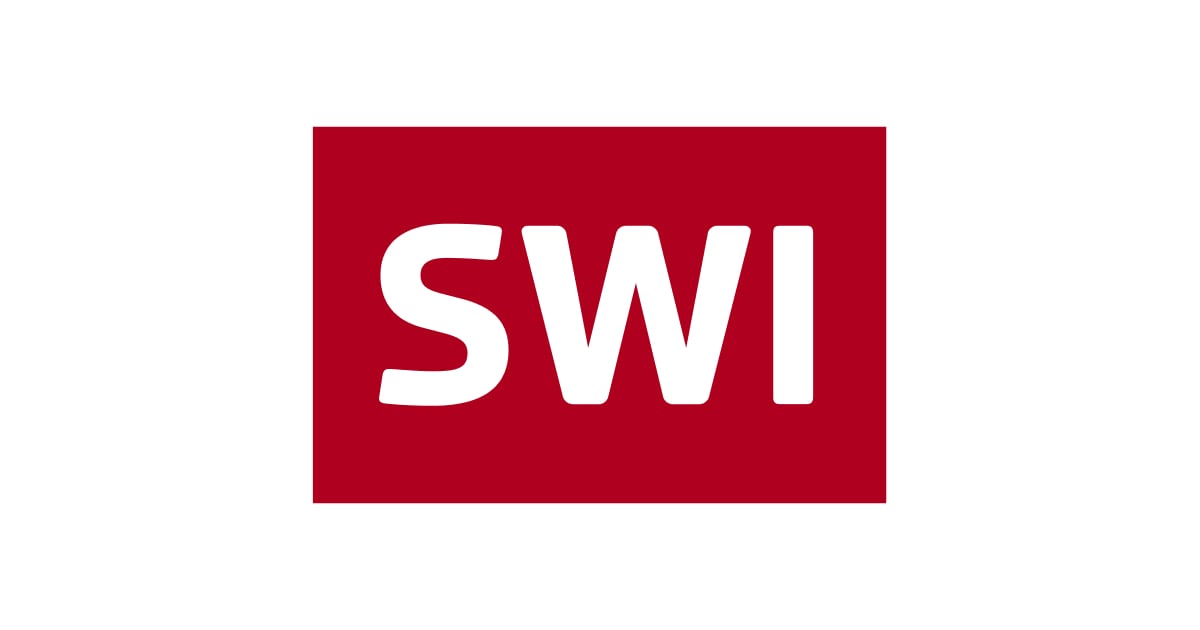Norway international Andreas Schjelderup says he is facing conviction for illegally sharing a video.
The 21-year-old Benfica winger posted a statement on his Instagram account on Saturday, admitting to a “stupid mistake” when he was 19 and playing…

Norway international Andreas Schjelderup says he is facing conviction for illegally sharing a video.
The 21-year-old Benfica winger posted a statement on his Instagram account on Saturday, admitting to a “stupid mistake” when he was 19 and playing…

Vitalhub Corp. (TSE:VHI) shareholders are probably feeling a little disappointed, since its shares fell 6.8% to CA$10.22 in the week after its latest quarterly results. Revenues beat expectations by 12% to hit CA$32m, although earnings fell badly short, with Vitalhub reported a statutory loss of CA$0.01 per share even though the analysts had been forecasting a profit. Following the result, the analysts have updated their earnings model, and it would be good to know whether they think there’s been a strong change in the company’s prospects, or if it’s business as usual. We thought readers would find it interesting to see the analysts latest (statutory) post-earnings forecasts for next year.
We’ve found 21 US stocks that are forecast to pay a dividend yield of over 6% next year. See the full list for free.
After the latest results, the eleven analysts covering Vitalhub are now predicting revenues of CA$127.2m in 2026. If met, this would reflect a major 30% improvement in revenue compared to the last 12 months. Per-share earnings are expected to leap 498% to CA$0.27. Before this earnings report, the analysts had been forecasting revenues of CA$125.2m and earnings per share (EPS) of CA$0.28 in 2026. So it looks like there’s been a small decline in overall sentiment after the recent results – there’s been no major change to revenue estimates, but the analysts did make a small dip in their earnings per share forecasts.
See our latest analysis for Vitalhub
It might be a surprise to learn that the consensus price target was broadly unchanged at CA$15.34, with the analysts clearly implying that the forecast decline in earnings is not expected to have much of an impact on valuation. The consensus price target is just an average of individual analyst targets, so – it could be handy to see how wide the range of underlying estimates is. Currently, the most bullish analyst values Vitalhub at CA$16.50 per share, while the most bearish prices it at CA$15.00. Even so, with a relatively close grouping of estimates, it looks like the analysts are quite confident in their valuations, suggesting Vitalhub is an easy business to forecast or the the analysts are all using similar assumptions.
Taking a look at the bigger picture now, one of the ways we can understand these forecasts is to see how they compare to both past performance and industry growth estimates. We would highlight that Vitalhub’s revenue growth is expected to slow, with the forecast 23% annualised growth rate until the end of 2026 being well below the historical 34% p.a. growth over the last five years. By way of comparison, the other companies in this industry with analyst coverage are forecast to grow their revenue at 11% annually. Even after the forecast slowdown in growth, it seems obvious that Vitalhub is also expected to grow faster than the wider industry.

Passive investing in an index fund is a good way to ensure your own returns roughly match the overall market. While individual stocks can be big winners, plenty more fail to generate satisfactory returns. Investors in John Wiley & Sons, Inc. (NYSE:WLY) have tasted that bitter downside in the last year, as the share price dropped 30%. That’s disappointing when you consider the market returned 14%. At least the damage isn’t so bad if you look at the last three years, since the stock is down 22% in that time.
Since shareholders are down over the longer term, lets look at the underlying fundamentals over the that time and see if they’ve been consistent with returns.
This technology could replace computers: discover the 20 stocks are working to make quantum computing a reality.
To paraphrase Benjamin Graham: Over the short term the market is a voting machine, but over the long term it’s a weighing machine. One flawed but reasonable way to assess how sentiment around a company has changed is to compare the earnings per share (EPS) with the share price.
John Wiley & Sons managed to increase earnings per share from a loss to a profit, over the last 12 months.
When a company has just transitioned to profitability, earnings per share growth is not always the best way to look at the share price action. But we may find different metrics more enlightening.
In contrast, the 8.5% drop in revenue is a real concern. Many investors see falling revenue as a likely precursor to lower earnings, so this could well explain the weak share price.
The company’s revenue and earnings (over time) are depicted in the image below (click to see the exact numbers).
We know that John Wiley & Sons has improved its bottom line lately, but what does the future have in store? So it makes a lot of sense to check out what analysts think John Wiley & Sons will earn in the future (free profit forecasts).
It is important to consider the total shareholder return, as well as the share price return, for any given stock. Whereas the share price return only reflects the change in the share price, the TSR includes the value of dividends (assuming they were reinvested) and the benefit of any discounted capital raising or spin-off. Arguably, the TSR gives a more comprehensive picture of the return generated by a stock. We note that for John Wiley & Sons the TSR over the last 1 year was -27%, which is better than the share price return mentioned above. This is largely a result of its dividend payments!
While the broader market gained around 14% in the last year, John Wiley & Sons shareholders lost 27% (even including dividends). Even the share prices of good stocks drop sometimes, but we want to see improvements in the fundamental metrics of a business, before getting too interested. On the bright side, long term shareholders have made money, with a gain of 5% per year over half a decade. It could be that the recent sell-off is an opportunity, so it may be worth checking the fundamental data for signs of a long term growth trend. While it is well worth considering the different impacts that market conditions can have on the share price, there are other factors that are even more important. Consider risks, for instance. Every company has them, and we’ve spotted 2 warning signs for John Wiley & Sons you should know about.

For jewelry, she opted for her late mother-in-law’s Collingwood pearl earrings, and a Royal Navy Fleet Air Arm Pilot’s wing gold FAA sweetheart brooch. The earrings were an engagement gift to Princess Diana from the Spencer family’s…

Water levels at the dam reservoirs supplying Iran’s north-eastern city of Mashhad have plunged below 3%, according to reports, as the country suffers from severe water shortages.
“The water storage in Mashhad’s dams has now fallen to less…

Amanda Nasrallah/LinkedIn
Amanda Nasrallah, Fifth-year Medical Student at Al-Quds University, and Palestine National Delegate at IASSS (International Association of Student Surgical…

The Nasdaq Stock Market LLC (“Nasdaq”) recently proposed modifications to its initial and continued listing standards (“Proposed Listing Standards”). The Proposed Listing Standards were submitted to the U.S. Securities and Exchange Commission (“SEC”) on September 3, 2025, for review. If approved by the SEC, the Proposed Listing Standards would introduce both increased requirements for minimum company public float and capital raised during initial public offerings and stricter suspension and delisting procedures for companies failing to meet Nasdaq’s continued listings standards.
Note that if approved, Nasdaq plans to implement the changes to the initial listing requirements promptly, offering a 30-day window for companies already in the listing process to complete the process under the prior standards. Thereafter all new listings will have to meet the new requirements. As discussed further below, a key aspect of the Proposed Listing Standards is the reintroduction of a minimum public offering proceeds requirement specifically for companies principally operating in China. If approved, this could significantly raise the entry barrier for these companies into U.S. capital markets.
Nasdaq is proposing to raise the minimum Market Value of Unrestricted Publicly Held Shares (“MVUPHS”) requirement for companies listing under the net income standard on the Nasdaq Global Market and the Nasdaq Capital Market. Unrestricted Publicly Held Shares are shares that are not held by an officer, director or 10% shareholder and that are free of resale restrictions.
Currently, a company must have a minimum MVUPHS of US$8 million under the income standard for initial listing on the Nasdaq Global Market or a minimum MVUPHS of US$5 million under the net income standard for initial listing on the Nasdaq Capital Market. The Proposed Listing Standards would increase the MVUPHS requirement to US$15 million for companies listing under the net income standard for both the Nasdaq Global Market and the Nasdaq Capital Market.
As Nasdaq explains in its proposal, the MVUPHS standard is one of the core liquidity requirements of the Nasdaq listing rules. Like the other liquidity requirements, it is meant to ensure there is sufficient liquidity to provide price discovery and support an efficient and orderly market for a company’s securities. However, Nasdaq continues to observe problems with the trading of smaller company listings with low liquidity, including a lack of price discovery and ongoing noncompliance with Nasdaq’s listing rules, and Nasdaq has therefore proposed the increases to the minimum MVUPHS to help address these concerns.
Nasdaq is also proposing to amend its rules to accelerate the suspension and delisting process for certain noncompliant companies. Specifically, if a company that has a Market Value of Listed Securities (“MVLS”) of less than US$5 million becomes noncompliant with a quantitative continued listing requirement (minimum bid price, MVLS or market value of publicly held shares), it will be subject to immediate suspension and delisting without a compliance period. Based on the noncompliant-companies list disclosed by Nasdaq as of October 27, 2025, 235 Nasdaq-listed companies are currently failing to meet Nasdaq’s continued listing standards.
Under the current rules, a company listed on Nasdaq that falls out of compliance with quantitative continued listing requirements is typically granted a 180-day grace period to regain compliance. A request for a hearing usually stays the delisting process. The Proposed Listing Standards would eliminate the grace periods for a company whose MVLS has remained below US$5 million for 10 consecutive business days. According to the Proposed Listing Standards, Nasdaq believes it is not appropriate for such a company to continue trading on Nasdaq during the pendency of a hearing and will suspend trading in its securities immediately.
These rules would take effect 60 days after SEC approval.
Nasdaq is also proposing to adopt new listing requirements for companies headquartered, incorporated or principally administered in China (including Hong Kong and Macau):
A company is considered “principally administered in China” if any of the following tests are met:
These rules would take effect 30 days after SEC approval.
Nasdaq’s proposed amendments to its initial and continued listing standards (SR-NASDAQ-2025-068 and SR-NASDAQ-2025-069) remain subject to SEC review and approval, which could take up to 90 days or longer. If adopted, smaller companies, and particularly those based in China, will face higher thresholds to list and maintain their status on Nasdaq.

Zohran Mamdani’s stunning victory in New York’s mayoral race has shattered long-held assumptions about Jewish voting patterns in the city. His win, powered by younger, progressive Jews disillusioned with Israel’s war in Gaza signals a…

(Bloomberg) — A rare thing is about to happen in the $55 billion market for catastrophe bonds: a trigger event will wipe out 100% of a bond’s principal.
Jamaica’s $150 million cat bond has been the subject of controversy since it failed to trigger last year after Hurricane Beryl destroyed large parts of the island. The development sparked calls for a fundamental rethink of the suitability of such financial instruments for developing countries on the frontlines of climate change.
Investors in cat bonds are now hoping that the trigger event forced by Melissa — a massive category 5 hurricane — will finally put such doubts to rest.
“It’s actually a good thing that this bond pays out,” Dirk Schmelzer, senior fund manager at Plenum Investments AG, a holder of Jamaica’s cat bond, said in an interview. “It shows how cat bond structures can help support countries get back on their feet again.”
But skepticism toward the instruments persists.
It took a “black swan” event to trigger the bond, says Jwala Rambarran, a former governor of the central bank of Trinidad and Tobago. “Melissa supersedes everything.”
Rambarran is the co-author of a report by the Vulnerable Twenty Group, or V20 — a collection of nations most exposed to climate change — that last year called for an in-depth reappraisal of sovereign cat bonds. After Beryl, V20 warned that the bonds were becoming increasingly rigid in their structure, with narrow parameters that were shielding investors without helping poorer populations.
Catastrophe bonds are used by issuers — mostly insurers but sometimes also governments — to transfer risk to capital markets. Bondholders risk losses if a predefined catastrophe occurs, but also face sizable returns if it doesn’t. Jamaica agreed to pay investors in its bond a floating rate of 7% above US money market rates.
The last time a weather-related cat bond paid out in full was in connection with Hurricane Ian in 2022. The Swiss Re Global Cat Bond Index slipped about 2% that year, but has since delivered record gains. In the three years since Ian, the Swiss Re index has soared 60%.
Jamaica has what is probably the most robust disaster-financing program of all Caribbean nations. In addition to the $150 million it will get from its cat bond, it can tap $300 million in contingent credit from the Inter-American Development Bank and draw a $92 million payout from a parametric insurance program.
The insured costs of Hurricane Melissa’s damages to onshore property in Jamaica now range between $2.2 billion and $4.2 billion, according to data firm Verisk Analytics Inc. The actual cost, however, will be much higher with less than 20% of the Caribbean island’s residential properties insured, and a significant share lacking sufficient insurance, according to Verisk.
The funds being made available to Jamaica via its cat bond and other instruments “will never be enough to do the restoration and even to do the relief work right now,” Dana Morris Dixon, minister of education, skills, youth and information, said in a briefing on Oct. 31.
At the World Bank, which handled the issuance of Jamaica’s cat bond, Vice President and Treasurer Jorge Familiar said the island’s “comprehensive disaster risk management strategy and proactive approach serve as a model for countries facing similar threats and seeking to strengthen their financial resilience to natural disasters.”
The payout “underscores the role of catastrophe bonds in effective risk management strategies and their efficiency in transferring disaster risks to capital markets,” he said.
But Rambarran says that for highly destructive storms such as Beryl, the risk remains that cat bond triggers are “too hard and specific.” He says “we still need to continue to look at their design and strike a balance between providing a return and doing good.”
Meanwhile, investors exposed to Jamaica’s cat bond are unlikely to suffer any meaningful hits to their portfolios, according to Mara Dobrescu, director of fixed income strategies at Morningstar.
“No one had a huge amount” of Jamaica’s cat bond in their portfolio, she said. So investors will easily absorb any Melissa-related losses and continue to have “a stand-out year.”
At Plenum, the expectation is that losses associated with its holding of the Jamaica bond will leave a dent of only 0.23% on one of its two cat bond funds, while the other will be untouched. The asset manager has no plans to scale back its interest in World Bank-backed issuances, Schmelzer said.
“From an ESG perspective we have a lot of clients who like to see these transactions in the portfolio,” he said. “Losses are losses, but this is a better loss than other ones.”
Major holders of Jamaica’s catastrophe bond include Stone Ridge Asset Management LLC of New York, UK-based Baillie Gifford & Co., and Schroders, according to data compiled by Morningstar.
Stone Ridge didn’t respond to requests for comment. Spokespeople for Baillie Gifford and Schroders declined to comment.
The extent to which vulnerable nations should rely on capital markets to help deal with extreme weather looks set to shape the COP30 talks in Brazil. Such questions also feed into the so-called Baku-to-Belem Roadmap (a reference to Conference of the Parties summits in 2024 and 2025), which seeks to mobilize $1.3 trillion annually for developing countries.
A study published in 2024 found that three years after hurricanes hit in the Caribbean basin, debt levels were 18% higher than in a baseline scenario.
In its statement on Friday, the World Bank said that catastrophe bonds are part of its Crisis Preparedness and Response toolkit “which provides developing countries with an innovative suite of tools to better respond to crises and prepare for future shocks.” The goal is “fast access to cash for emergency response, expanded catastrophe insurance and the option to pause debt service payments in the aftermath of a natural disaster.”
The extent of the destruction in the case of Hurricane Melissa “is going to be so large that even with the level of pre-arranged financing that Jamaica has, there won’t be enough funds to meet the extent of the loss,” Rambarran said.
Melissa’s impact on Jamaica “puts us in front of a bigger issue,” he said. “We need a global financial architecture that can support these countries in a deeper way.”
–With assistance from Lauren Rosenthal, Brian Eckhouse and Alexandre Rajbhandari.
(Adds World Bank comment in third-to-last paragraph.)
©2025 Bloomberg L.P.
